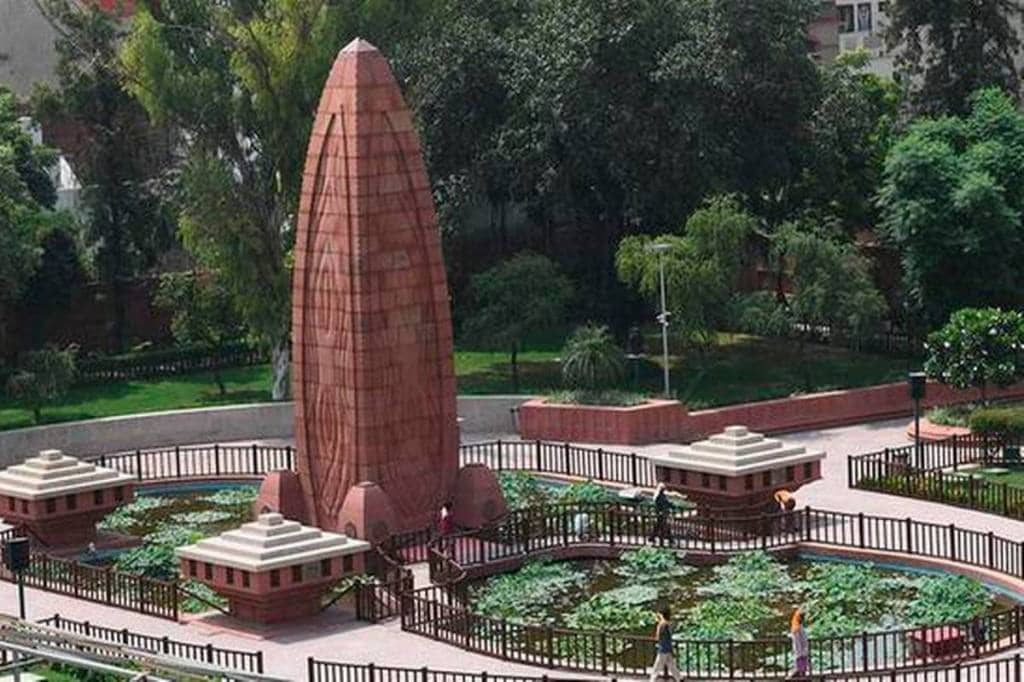The revamp of the Jallianwala Bagh in Amritsar has led to severe criticism of the government with historians accusing the planners of ‘disneyfying’ the monument and erasing the memories of that horrific day of April 13, 1919, when Col Dyer opened fire on a group of peaceful protesters, killing almost 1,000 of them.
The criticism is focused on the hi-tech galleries that have replaced the stark, unadorned passage through which General Dyer’s soldiers marched into the Bagh.
While several other changes were made to Jallianwala Bagh over the years, the narrow alley, made of Nanakshahi bricks, was left untouched. Last year in July, it was rebuilt into a gallery with murals, leaving no trace of the old alley.
The refurbished monument was inaugurated by Prime Minister Narendra Modi on Saturday through video conferencing. Opening the renovated complex, PM Modi said it is the country’s duty to protect its history.
“It is not right for any country to ignore such horrors of its past,” he said, noting that August 14 is now being observed as Partition Horrors Remembrance Day. He had also tweeted a preview of the lights installed in the complex.
Join me as we inaugurate the renovated complex of Jallianwala Bagh Smarak today at 6:25 PM. I also invite you to watch the sound and light show. It would display the horrific massacre of April 1919 and instil a spirit of gratitude and reverence towards the martyrs. pic.twitter.com/p2BDHUbXAJ
— Narendra Modi (@narendramodi) August 28, 2021
The four revamped galleries showcase the Jallianwala massacre and other key events of India’s freedom struggle through projection mapping and 3D representation, photographs and sculptural installations. At night, a light-and-sound show is another attraction at the revamped monument.
Congress leader Rahul Gandhi said that his party was against the “indecent cruelty” by the government. “Only those who don’t understand the meaning of martyrdom can insult the martyrs of Jallianwala Bagh. I am a son of a martyr and I will never tolerate the insult of martyrs,” he tweeted in Hindi.
जलियाँवाला बाग़ के शहीदों का ऐसा अपमान वही कर सकता है जो शहादत का मतलब नहीं जानता।
मैं एक शहीद का बेटा हूँ- शहीदों का अपमान किसी क़ीमत पर सहन नहीं करूँगा।
हम इस अभद्र क्रूरता के ख़िलाफ़ हैं। pic.twitter.com/3tWgsqc7Lx
— Rahul Gandhi (@RahulGandhi) August 31, 2021
“This is corporatisation of monuments, where they end up as modern structures, losing the heritage value. Look after them without meddling with the flavours of the period these memorials represent,” tweeted historian S Irfan Habib.
Reacting on Habib’s tweet, CPM’s Sitaram Yechury said: “only those who stayed away from the epic freedom struggle can scandalise thus.”
“Devastated to hear that Jallianwala Bagh, site of the Amritsar Massacre of 1919, has been revamped — which means that the last traces of the event have effectively been erased. This is what I wrote of the memorial in my book, describing a space that has now itself become history,” tweeted historian Kim A. Wagner.
The Jallianwala Bagh massacre dates back to April 1919, when the British were facing major protests in Punjab against the Rowlatt Act, that let them arrest people without any warrant or trial. Sir Michel O’ Dwyer imposed martial rule in Lahore and Amritsar on April 11, but the order reached Amritsar only on April 14. Alongside, he also sent Col R E H Dyer, who was then holding the temporary rank of Brigadier General, from the Jalandhar cantonment to Amritsar.
On April 13, a Sunday, Col Dyer’s troops marched through the town to warn against the assembly of more than four people. But the announcement did not reach most people, and devotees started making a beeline to the Golden Temple to celebrate Baisakhi. As the day wore, many of them headed to the nearby Jallianwala Bagh, a quadrangle with a well, surrounded by tall houses and a narrow passage, to join the 4 pm public meet against the arrest of Dr Satyapal and Dr Saifuddin Kitchlew. The two had been arrested for opposing the Rowlatt Act, and local leaders had called for a protest meet on the evening of April 13.
Upon hearing about the large gathering, Col Dyer marched into the Bagh with a column of 50 soldiers armed with .303, Lee Enfield and bolt action rifles around 5 pm. It’s said he ordered the troops to open fire without giving any warning. They fired all the 1,650 rounds they had, even though the crowd started fleeing after the first volley. According to the British, 376 persons were killed in the firing, the youngest of whom was 9 and the oldest 80. Indian historians peg the toll at 1,000.
Among those who managed to escape was Udham Singh, then 21. He vowed to avenge the massacre, and shot dead Sir Michael O’ Dwyer at Caxton Hall in London in 1942.

